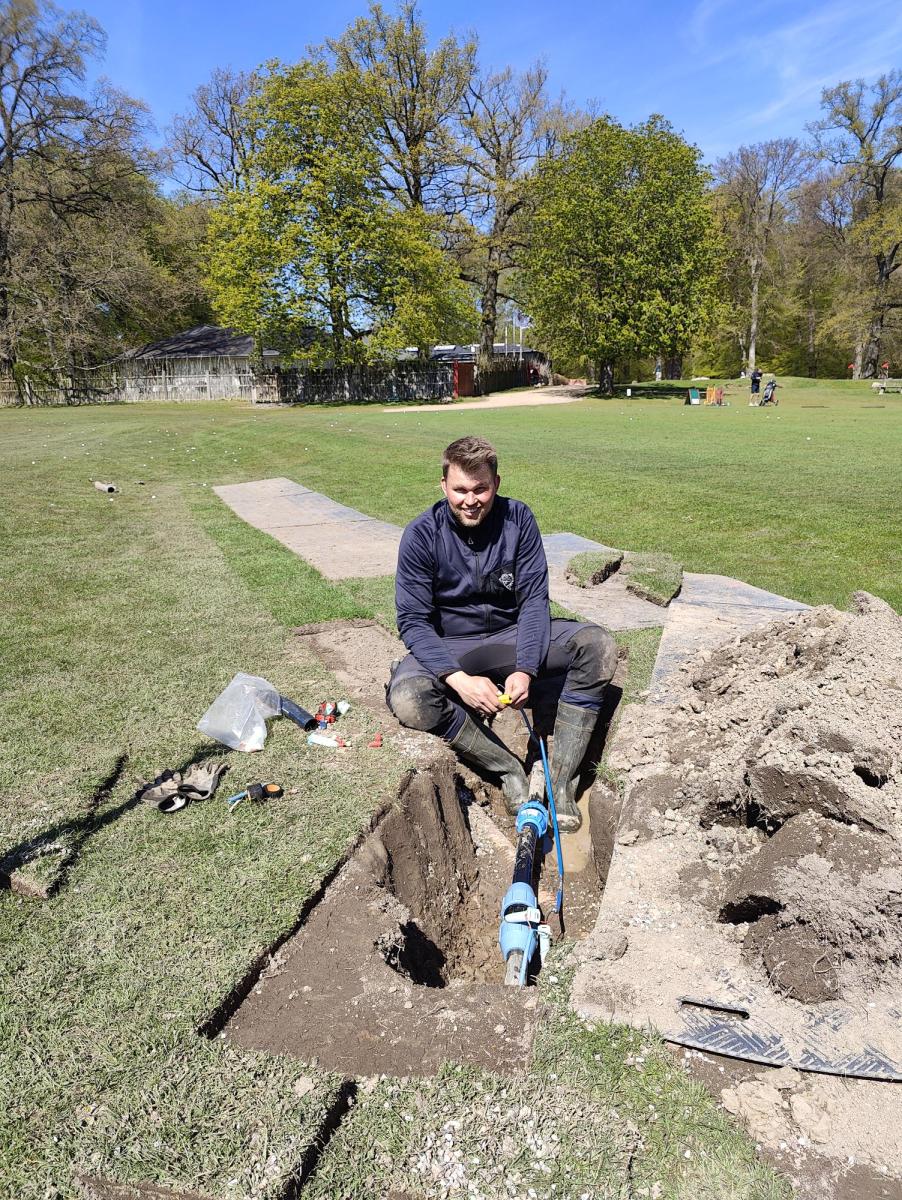News from the field
Planned work on the field in the coming weeks:
Week 20:
Greens topdresses Monday.
Dodging on the greens
Watering is done on the 11th and 13th fairways
Week 21:
Tees are dotted and topdresses
The spring is still very dry and we are waiting for the grass to grow. It won't come until we get a good rain. We water as much as our system allows us, but the areas not covered by sprinklers are suffering. A week of boring rain would do wonders for the course.
We have had a lot of witches' rings in recent years. First on our foregreens, then on some tees and now also on fairways. Witches' rings are a naturally occurring fungus that thrives in grass. There are different types of it, but the most harmful is the one we see on the course right now. The grass is scorched by large amounts of released nitrogen when the witches' rings slowly grow. Witches' rings are obvious when conditions are dry like we have on our course now. If we get a wet summer, the grass will be better able to fight back. We don't know if we will get that, but until then the greenkeepers will try to repair the damage to our foregreens. Last year we worked intensively on a number of foregreens plagued by witches' rings with some success. We will resume that work here in May.
As soon as the rain comes, we will be putting down a conditioner and fertilizer on the fairways. We have a denser turf on the fairways than we have in other springs and they are less damaged by deer. Divots from winter games are now a thing of the past because you have become so good at using mats throughout the winter. So our starting point for further lifting our fairways is better than compared to other years. Now it is just water that is the limiting factor. Perhaps long drought periods will become more common, but we are preparing by choosing more drought-resistant grass species when we reseed and the use of conditioner also helps the grass get the most out of the soil's water content. A dense turf as opposed to an open hole also helps reduce evaporation. Building up a dense turf is what the fertilizer helps with.
It may seem pointless to use divot bags on fairways when it is as dry as it is, but it is still a great help in creating smoother fairways and getting holes repaired as quickly as possible. I think the turnover rate of the hanging bags in the starter house is too low this year, so you must be more diligent here. Many thanks in advance.
We have a robot mower on trial. “Crille”, as it is called, has been introduced to several of you on the range. For about 2 months it will look after Louis' large teeing ground. After that we can evaluate whether it can manage to mow around dividers, signs and players and whether it can mow in tees and deer droppings. But the first trial period has been very positive and we greenkeepers are very excited. Now we also let Crille mow the short game area and maybe it is a little world news for the club. At least I have not heard of other places where they let a robot mow a newly established grass area.
There is a lot happening in the field of robotic lawnmowers for professional care these years and the solutions are becoming more and more attractive. They cut well, they have become “smarter” and more efficient and they are reliable. The climate account and the noise level are also pluses. STERF, the joint Nordic grass research fund, has started researching whether the grass becomes healthier and stronger when cut by small robots instead of large and heavy diesel machines. I see robots on golf courses as part of the future of golf courses. They will free up time for the greenkeepers to be able to focus on details instead of production. In particular, weeds, insect damage and diseases will take up a lot of the greenkeepers' time in the future as pesticides disappear. Perhaps they will disappear faster than we expect, as the EU Commission has come up with a bill for a general EU-wide ban on the use of pesticides on grass areas where people walk.
As written, the robot is being tested in our club. Although many clubs are in the process of acquiring robots, we are not sure whether they will fit into Dyrehaven and whether all the many rules we have to follow will even allow room for them. Time will tell.
The ban on the range has now finally been lifted. Poor Louis. Now his difficult time begins where his beloved range is being broken into pieces every day. It is a condition he must accept, but you can help him by practicing hitting your practice shots in lines instead of a scattered pattern. This will significantly reduce the wear and tear. Oskar and Klar are helpful in showing you the technique.
Cross your fingers for rain, remember to use your pitchfork and grab a divot bag for the trip.
Enjoy,
Martin Nilsson, Chief Greenkeeper.

